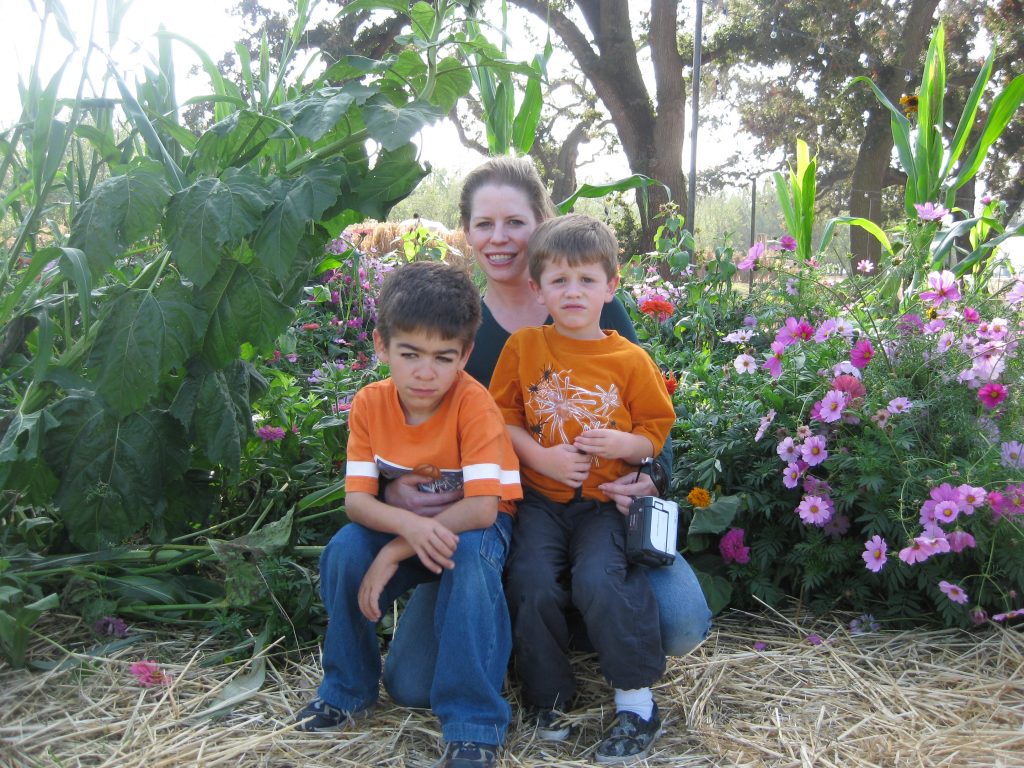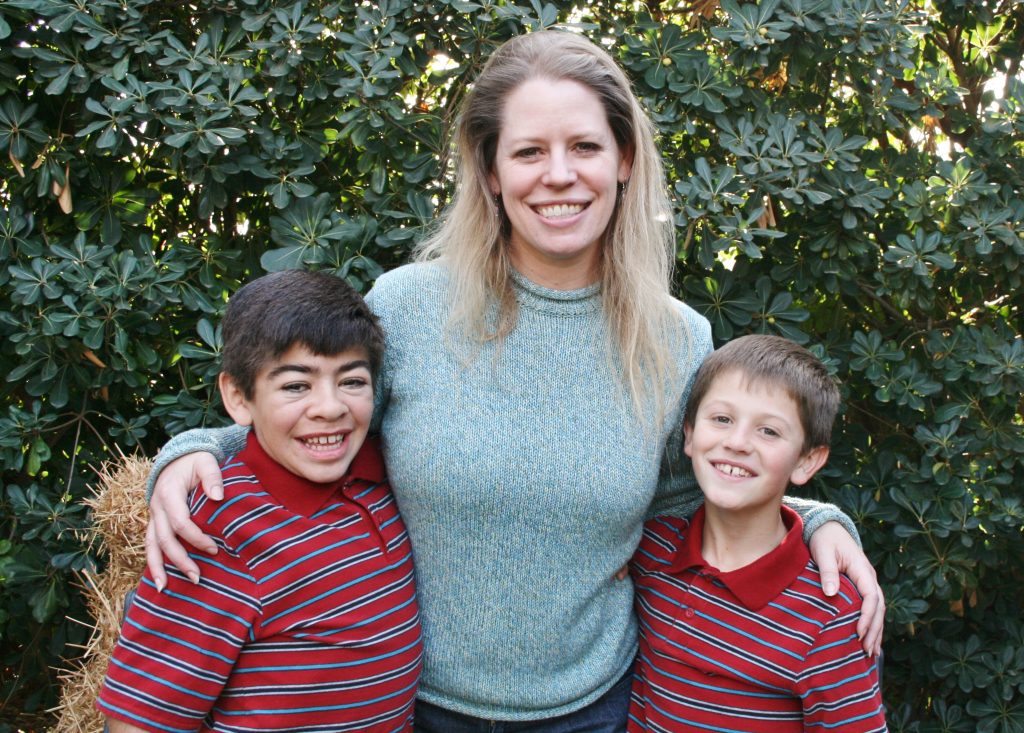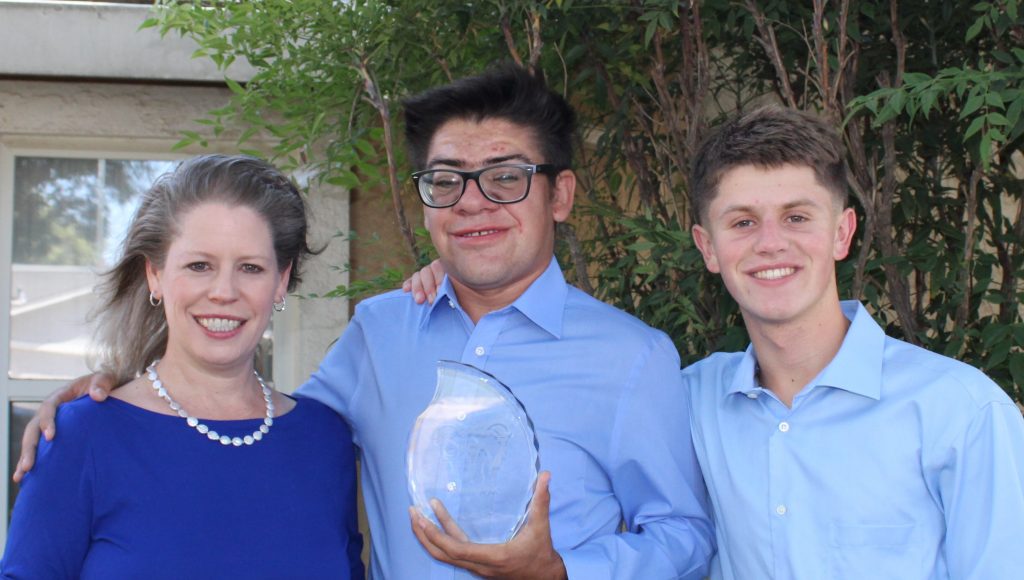About fifteen years ago, one of my worst practical fears came to pass when I received a phone call that my young children had lost their employee-sponsored healthcare insurance. Today we have the Affordable Care Act, but back in 2008, there was no such thing. As a parent of a child with a serious, multi-systemic genetic disease called ASMD, the implications were overwhelming. Earning a part-time lecturer’s salary, how could I possibly manage my son’s medical expenses?
 I became obsessive about this new uninsured status. Having received bills for $750 for just one ten-minute specialist’s visit or upwards of $5,000 for a trip to the emergency room, I had no idea how I could possibly pay for the healthcare costs I would be facing. What were my options? Declare bankruptcy? Beg for family loans? Rack up massive credit card debt? Quit my job and declare ourselves medically indigent? And forget about luxuries like vacations. Expendable income? Nope. Bizarre ideas about bubble-wrapping my son to keep him from hurting himself began occupying valuable space in my brain. How on Earth will we manage? I began ruminating incessantly.
I became obsessive about this new uninsured status. Having received bills for $750 for just one ten-minute specialist’s visit or upwards of $5,000 for a trip to the emergency room, I had no idea how I could possibly pay for the healthcare costs I would be facing. What were my options? Declare bankruptcy? Beg for family loans? Rack up massive credit card debt? Quit my job and declare ourselves medically indigent? And forget about luxuries like vacations. Expendable income? Nope. Bizarre ideas about bubble-wrapping my son to keep him from hurting himself began occupying valuable space in my brain. How on Earth will we manage? I began ruminating incessantly.
After a few months of this mental torture, I realized something had to change. Life couldn’t go on like this. Then an idea came to me. Self-care. Yes. . . I am going to get myself some of this “self-care” I have been hearing so much about. Back then, the term was known, but not in common usage like it is now.
I thought back to my childhood when a neighbor surprised me with a candle-making kit. I recalled the delight I took in making a tri-colored, heart-shaped sand candle that I can still see in my mind’s eye. I wanted to relive those joyful, excited, and proud feelings. So I decided, Yes, that’s it. I am going to make candles for my self-care.
Being sensitive to strong scents, I decided that all-natural beeswax was the way to go. Living in an area where beehives are a mainstay for the almond orchards that require commercial pollination, I easily found a bee keeper who sold me twenty pounds of the most beautiful and naturally fragrant, opaque golden-yellow beeswax you’ve ever seen. “Take a whiff of that!” the beekeeper said, holding open the bag for me. Indeed, the beeswax smelled heavenly of honey.
Sometime later on a Sunday, after finding some inexpensive candle molds from Craigslist and buying some wicks from the craft store, I decided the time was ripe for my candle making self-care experience.
First though, I needed to heat up my used wax melting pot. It had some dark pinkish-red, artificial bayberry-smelling wax left in it that looked suspiciously like the remnants of someone’s Christmas candle project. No, that wax would definitely contaminate my beautiful, pure, golden beeswax. So I set the pot on the stove and reasoned, Okay, I’ll let this wax melt so I can clean it out. Then I’ll begin.
But after I set my pot on the stove, my mind drifted away from candles, and wandered back towards my insurance dilemma. I’m going to hop on the Internet while this heats up, maybe look around for some options, I reasoned.
Okay, so now if you’re thinking, what a terrible idea, you’d be right. Anyway, I sat down at the computer, and then I felt myself being drawn into a surreal cyberspace. I began clicking around, website after website, moving ever deeper into that tunnel of despair when suddenly I was startled by a loud Bang! Pop! And a split-second later, a shrill and frantic beep beep beep rang from smoke alarms throughout the house. I jumped back into my physical body, sprang out of the chair and dashed into the kitchen. It was on fire! The candle wax had ignited. The microwave, the stovetop, and the edge of the cabinets were awash in angry, bright orange flames.
In the fight or flight circumstances, I froze. But I managed to grab the phone and dial 911.
“911, what’s your emergency?” the woman who answered stated. In my frozen state, the best I could manage was to blurt out in a breathy, monotone voice, “Fire. Fire.”
“Get everyone out of the house!” the operator ordered. I can’t quite remember what was said next. But then somehow, in the course of nano-seconds, I re-engaged my cognition and had the following conversation in my head.
Kara, get ahold of yourself. You won a trophy in the third grade for drawing the best fire-prevention poster in the whole school. The fire fighters came to award it to you. You can do something about this fire.
And so I reached into a cupboard (which was not aflame), grabbed an almost full box of baking soda, and hurled the contents at the fire. That managed to douse about 75% of the flames. Then I took a breath, and I huffed and I puffed until I blew the rest of them out.
 Just then, the sound of sirens grew louder as two fire engines and the fire chief’s truck all pulled up to my house, right along with all the neighbors from the cul-de-sac who lined up along the sidewalk to watch, one with a video camera who slowly panned around to record the action. As icing on the cake, right at that moment, my parents and children returned from a Sunday drive, and my oldest son Evren began crying that all of his toys were going to burn up. By then I knew the danger had passed, so I just rolled my eyes, tipped my head back, and shook my head ruefully. No, this definitely was not the self-care experience I envisioned.
Just then, the sound of sirens grew louder as two fire engines and the fire chief’s truck all pulled up to my house, right along with all the neighbors from the cul-de-sac who lined up along the sidewalk to watch, one with a video camera who slowly panned around to record the action. As icing on the cake, right at that moment, my parents and children returned from a Sunday drive, and my oldest son Evren began crying that all of his toys were going to burn up. By then I knew the danger had passed, so I just rolled my eyes, tipped my head back, and shook my head ruefully. No, this definitely was not the self-care experience I envisioned.
In the weeks following, my kitchen received a mini-makeover with a new range and microwave, professionally cleaned cabinets, and fantastic new paint with buttercup-yellow walls and a Swiss coffee ceiling. The insurance estimator gifted me a new fire extinguisher. I also found two good health insurance plans that helped cover my costs quite well until I eventually secured employer-funded insurance. In fact, I learned a lot from the candle-making disaster, and here’s what I’d like to share with you.
I did not recognize and think my way out of a cognitive distortion known as catastrophizing.
Catastrophizing, derived from the word catastrophe, is a destructive thinking process that short circuits our hope and joy. Catastrophizing is when you focus your thoughts and energy on the worst possible outcomes that could possibly happen. The fact is, most of the time, the catastrophic events do not become realities.
Now, I understand that when you are the parent of a child with a serious illness, there is something called anticipatory grief. I also have firsthand experiences with baselines that change for the worse and the realities of a genetic disease that is progressive. But catastrophizing is about a misguided choice, not a normal grieving process. My lesson was to learn to stop catastrophizing and reframe my circumstances in a more positive light. I found inspiration in a line from a song which I turned into a mantra. Now, when I see myself begin to ruminate, I tell myself, this is the life that my son and I have been given. Let us rejoice and be glad in it. I no longer waste away hours worrying about problems that do not exist.
I needed a different type of self-care.
Some are unaware that self-care actually has four components, physical, emotional, psychological, and spiritual. At the same time, society and the popular media teach us that we find freedom through external sources, especially with material goods. But beware of the limits of this approach to self-care. Candles are (usually) fun to make and nice to have. But candles weren’t what I needed. I needed to embrace my spirituality to encourage me and help me stop obsessing about things that were out of my control, including biblical verses like Joshua 1:9 which says, “Be strong and courageous. Do not be afraid; do not be discouraged, for the LORD your God will be with you wherever you go.”
Whether you describe yourself as religious, spiritually-minded, agnostic, or atheist, I hold that we are all spiritual beings and need to attend to our spiritual self-care. You can adapt ideas from any faith tradition or spiritual healer or author that resonate with you. Spiritual care is accessible universally and without cost.
I need the opportunity to leave the house for a few days.
Over time, I came to understand how critical it was to be able to leave the home for at least a few days every year. At home, we are surrounded by sights, sounds, and smells that call our stressors to mind. I have learned that after about two days away, I began to emotionally decompress and begin rebuilding my internal resources.
 A word of encouragement to those who are struggling financially or who find it difficult to navigate travel with a medically fragile or otherwise high-needs child. You, too, may benefit from a break from the home. For me, a self-care vacation did not necessitate leaving my children behind. Also, you can network with friends and family to help you, and perhaps take a shorter trip with simpler plans for your destination and activities. I have come to understand that for me, that leaving the home periodically as a form of self-care is a necessity, not a luxury.
A word of encouragement to those who are struggling financially or who find it difficult to navigate travel with a medically fragile or otherwise high-needs child. You, too, may benefit from a break from the home. For me, a self-care vacation did not necessitate leaving my children behind. Also, you can network with friends and family to help you, and perhaps take a shorter trip with simpler plans for your destination and activities. I have come to understand that for me, that leaving the home periodically as a form of self-care is a necessity, not a luxury.
When you do embark on a self-care experience, my best advice to you is to give yourself full permission to stay present in the moment, and to allow your heart and mind to be unburdened so that your self-care journey is a rewarding one, certainly without any fire engines involved.
